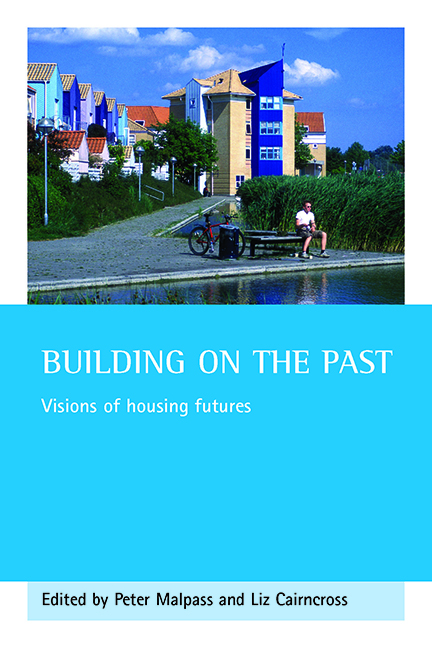Book contents
- Frontmatter
- Dedication
- Contents
- List of tables, figures and photographs
- Foreword
- Acknowledgements
- List of contributors
- one Introduction
- two Moving with the times: changing frameworks for housing research and policy
- three A new vision for UK housing?
- four Housing demand, supply and the geography of inequality
- five Understanding the drivers of housing market change in Britain’s postindustrial cities
- six Affordability comes of age
- seven Mob mentality: the threat to community sustainability from the search for safety
- eight Housing and the ageing population
- nine Tenant futures: the future of tenants in social housing
- ten Democracy and development
- eleven Conclusion
- Index
- Also available from The Policy Press
Foreword
Published online by Cambridge University Press: 15 January 2022
- Frontmatter
- Dedication
- Contents
- List of tables, figures and photographs
- Foreword
- Acknowledgements
- List of contributors
- one Introduction
- two Moving with the times: changing frameworks for housing research and policy
- three A new vision for UK housing?
- four Housing demand, supply and the geography of inequality
- five Understanding the drivers of housing market change in Britain’s postindustrial cities
- six Affordability comes of age
- seven Mob mentality: the threat to community sustainability from the search for safety
- eight Housing and the ageing population
- nine Tenant futures: the future of tenants in social housing
- ten Democracy and development
- eleven Conclusion
- Index
- Also available from The Policy Press
Summary
One of the most daunting aspects of my role as Chief Executive of The Housing Corporation is knowing that the decisions we take today about the projects we fund will have a lasting effect on future generations.
At the same time I remind myself that over 90% of the housing stock that we inhabit today will be the same stock we inhabit in over 30 years’ time. Thus, the even more daunting task is to make the most of what we’ve already got.
This publication is designed to help us to face up to both these tasks, in making choices about the new homes we develop and in investing in the welfare of existing communities.
In considering these challenges, I start from a very basic premise, that we should prioritise those who need help the most. Primarily, that means those who are homeless and living in overcrowded conditions, and those who too easily slip through the official definitions of need – the refugee, the older person struggling with financial hardship or the younger single person thrown out of home.
But how will these needs present themselves in 20 years’ time, and what will be an appropriate housing response? We only need to consider the changes in expectations since the 1980s in, say, hostel accommodation or sheltered housing, to know how difficult it is to truly build for the future.
Nevertheless, from the excellent contributions in this book I think we can discern certain trends that will help us to plan successfully. The first is that home ownership will continue to be viewed as the tenure of choice for the vast majority of people and that we will have to work very hard to prevent social housing, particularly social rented housing, becoming a residualised form of tenure. This has implications for how we design mixed tenure developments and how we allocate homes. A second trend is that we are becoming a more elderly population and this will require new forms of response both in terms of promoting independent living and also in how we provide care. A third is that affordability will continue to be a problem in many parts of the country for at least the next 10 years as we seek to accelerate the rate of housing supply from its current low base.
- Type
- Chapter
- Information
- Building on the PastVisions of Housing Futures, pp. ix - xPublisher: Bristol University PressPrint publication year: 2006



